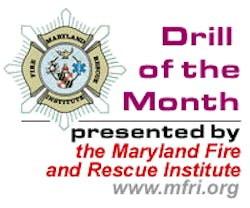Developing Department Safety Awareness
TOPIC: Developing Department Safety Awareness
TIME REQUIRED: 3 Hours
MATERIALS: Appropriate Audio-Visual Materials
RESOURCES/REFERENCES:
Handout: Life Safety Summit Initiatives from National Fallen Firefighters Foundation (NFFF) website.
Resource: NFFF CD-ROM on Firefighter Life Safety Initiatives, September 2004
PREPERATION:
MOTIVATION: Firefighters are being killed at an alarming rate. The fire service simply cannot continue to do business as usual when so many of its own are dying. The nation’s fire service conducted a national “Stand Down” to raise awareness of the need for increased vigilance toward fire fighter safety. The annual firefighter fatality and injury rate is unacceptable, making it imperative that every day is a “safety awareness” day.
STUDENT PERFORMANCE OBJECTIVE (SPO): Given information from discussion, handouts and reading materials, the member will focus on the troubling question of how to prevent firefighter line-of-duty deaths.
ENABLING OBJECTIVES (EO):
1-1 Explain the purpose for developing department safety awareness.
1-2 List resources readily available to fire department personnel.
1-3 Describe activities that can be conducted for safety awareness.
1-4 Developing a plan of action for safety improvements.
OVERVIEW:
• Introduction
• Resources
• Activities
• Plan of Action
I. Introduction - Purpose for developing department safety awareness (EO 1-1)
A. Major areas of concern (for discussion).
1. Line-of-duty deaths
2. Check apparatus and equipment
3. Discuss health/safety regulations
4. Review fireground safety issues
5. Re-visit physical fitness goals
B. On duty firefighter fatalities are constant
1. Average 90-100 per year
2. 52 fatalities 1/1/05 thru 5/31/05
C. Types of duty
1. Responding = 6
2. Training = 10
3. On scene firefighting = 15
4. On scene non-fire = 5
5. After = 5
6. Other on duty = 8
7. Returning = 3
D. Your departments’ culture affects safety
1. We MUST change the trend
2. It is your right to stop unsafe practices
3. It is your responsibility to stop unsafe practices
II. Resources (EO 1-2)
A. National Fallen Firefighters Foundation (NFFF) - 16 Life Safety Initiatives
1. Define and advocate the need for a Cultural change within the fire service relating to safety;
incorporating leadership, management, supervision, accountability and personal responsibility.
2. Enhance the personal and organizational accountability for health and safety throughout the fire
service.
3. Focus greater attention on the integration of risk management with incident management at all
levels, including strategic, tactical, and planning responsibilities.
4. All firefighters must be empowered to stop unsafe practices.
5. Develop and implement national standards for training, qualifications, and certification (including
regular recertification) that are equally applicable to all firefighters based on the duties they are
expected to perform.
6. Develop and implement national medical and physical fitness standards that are equally applicable
to all firefighters, based on the duties they are expected to perform.
7. Create a national research agenda and data collection system that relates to the initiatives.
8. Utilize available technology wherever it can produce higher levels of health and safety.
9. Thoroughly investigate all firefighter fatalities, injuries, and near misses.
10. Grant programs should support the implementation of safe practices and/or mandate safe
practices as an eligibility requirement.
11. National standards for emergency response policies and procedures should be developed and
championed.
12. National protocols for response to violent incidents should be developed and championed.
13. Firefighters and their families must have access to counseling and psychological support.
14. Public education must receive more resources and be championed as a critical fire and life safety
program.
15. Advocacy must be strengthened for the enforcement of codes and the installation of home fire
sprinklers.
16. Safety must be a primary consideration in the design of apparatus and equipment.
B. National Institute for Occupational Safety & Health (NIOSH) reports
C. National Institute of Standards & Technology (NIST) simulations
D. National Fire Protection Agency (NFPA)
E. Volunteer Firefighters Insurance Service (VFIS)
F. United States Fire Administration (USFA)
G. National Fire Academy (NFA)
H. International Association of Fire Chiefs (IAFC)
I. Maryland State Firefighters Association (MSFA)
J. Firehouse.com
K. Respondersafety.com
L. OSHA
M. Maryland Institute of Emergency Medical Services System (MIEMSS)
N. Firefighterclosecalls.com
O. Maryland Fire & Rescue Institute (MFRI)
III. Activities (EO 1-3)
A. Station operations
1. Moment of silence
2. Verify vehicle and apparatus checks completed on a routine schedule
3. Physicals for all members?
4. Designated safety officer?
B. Responding and returning
1. Does your department allow POV?
2. Driver qualifications verified
3. Spotters!!
4. Area familiarization
C. Fireground operations
1. Use of IMS/ICS/NIMS
2. Always have a safety officer
3. Review and follow SOP’s/SOG’s
4. Mandatory SCBA use
5. Review and follow accountability system
D. Other Emergency incidents
1. Follow departmental infection control guidelines
2. Ensure existence of highway safety procedures
3. Special teams emergencies – what can your department do?
E. Training
1. Follow AHJ minimum training requirements – no exceptions
2. Instructors must be qualified
3. Understand and follow NFPA 1403
4. Driver’s training and recertification
IV. Plan of Action (EO 1-4)
A. Identify personal areas of weakness
B. Identify departmental areas of weakness
C. List what can be fixed immediately
D. List what requires more planning/money
E. Solicit input from members
1. Starts
2. Stops
3. Continues
F. Make a plan – don’t shoot from the hip
G. Review/revise as necessary
H. Don’t be afraid to enforce what you demand
SUMMARY:
TOPIC: Safety Stand Down
STUDENT PERFORMANCE OBJECTIVE (SPO): Given information from discussion, handouts and reading materials, the member will focus on the troubling question of how to prevent firefighter line-of-duty deaths.
REVIEW:
• Introduction
• Resources
• Activities
• Plan of Action
